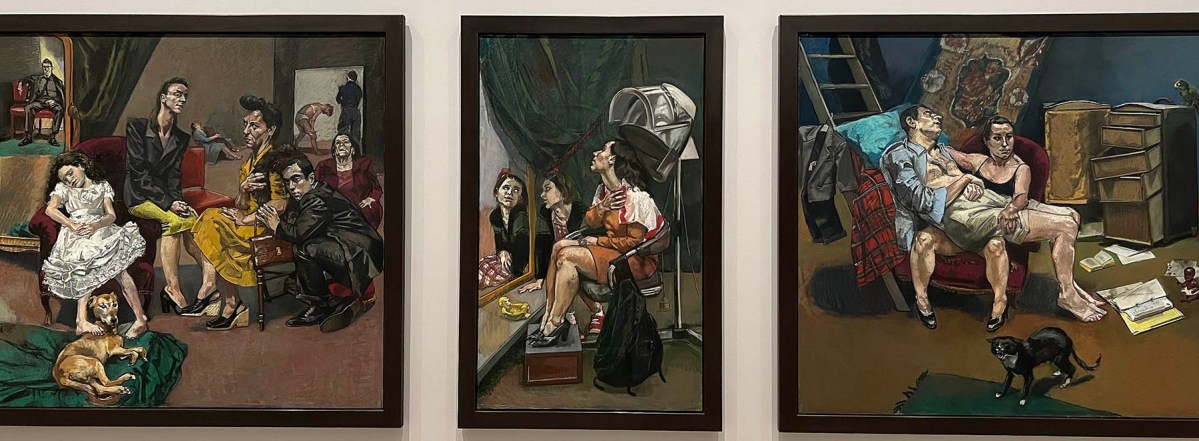La versión en español está después de la vesión en inglés.
The other current special exhibit at the Picasso Museum (click here) is on the Portuguese-British artist Paula Rego (1935–). I’m ashamed to admit I had never heard of her nor seen her work, but I immediately fell in love. I found the exhibit to be powerful, emotional, and inspirational. Rego was made a Dame of the British Empire in 2010. The three images across the top are “The Betrothal, Lessons, The Shipwreck,” after a series of six paintings done by Hogarth in the 18th-century, ‘Marriage à la Mode’, in which he criticized the custom of arranged marriages based on social and economic interests.
.
La otra exposición especial actual en el Museo Picasso (haz clic aquí) es sobre la artista portuguesa-británica Paula Rego (1935–). Me avergüenza admitir que nunca había oído hablar de ella ni había visto su trabajo, pero me enamoré de inmediato. La exhibición me pareció poderosa, emotiva e inspiradora. Rego fue nombrada Dama del Imperio Británico en 2010. Las tres imágenes en la parte superior son “The Betrothal, Lessons, The Shipwreck”, “The contrato matrimonial, lecciones, el naugragio”, después de ‘Marriage à la Mode’ de Hogarth, en el que critica la costumbre de los matrimonios concertados basados en intereses sociales y económicos.

• “Las niñas Vivian como molinos de viento”, 1984. De una novela sobre la sublevación de unas niñas esclivizados contra sus captores.

• 1975. “Blancaflor, El demonio y su mujer en la cama”. Un antiguo cuento popular de la Península Ibérica.

• De su serie de canciones infantiles de grabados, “Little Miss Muffet [pequeñna señorita Muffet], 1989.

• “Entre Mujeres”, 1997. Se inspira en la novela “El crimen del padre Amaro”, 1875, una crítica a la hipcresía de la Iglesia católica.

• “Fuga”, 2009.

• 1998. Parte de una serie titulada “Sin título: Los pasteles del aborto”, creado en respuesta a un referéndum derrotado por un estrecho margen para legalizar el aborto en Portugal.





